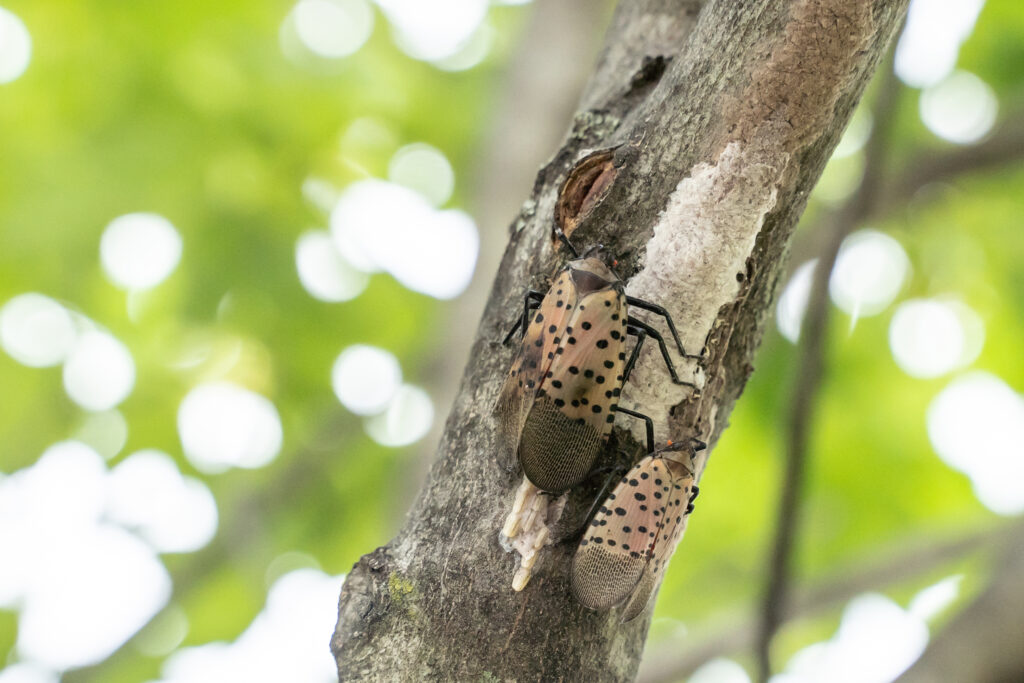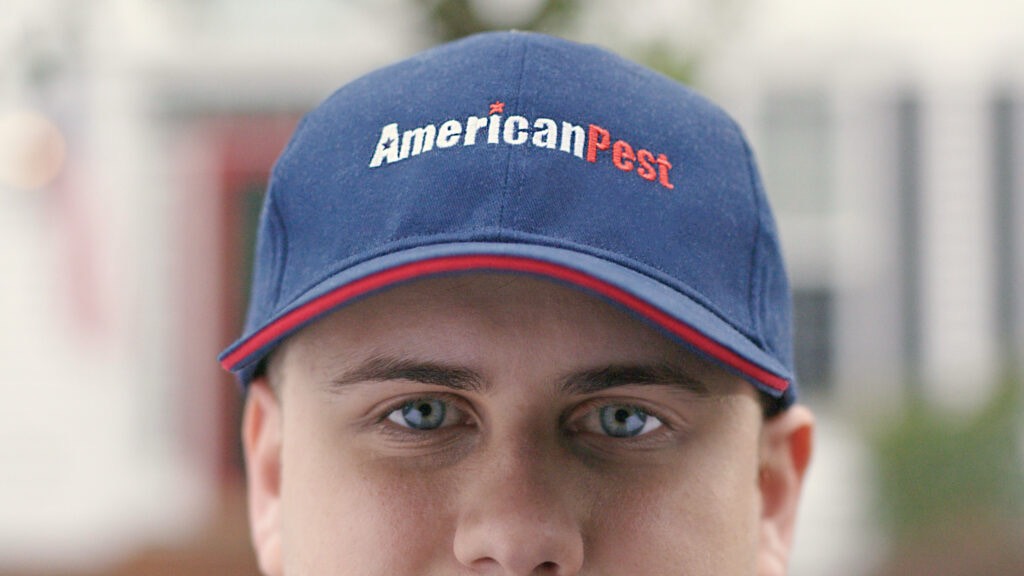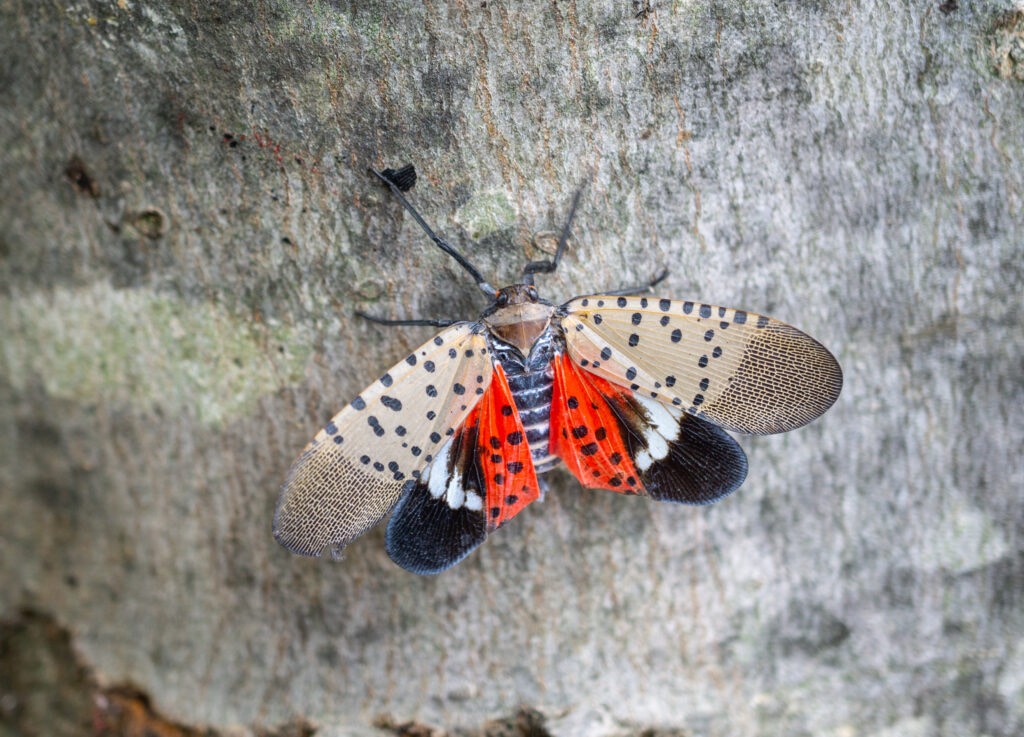Our Approach to Spotted Lanternfly Control in Maryland, D.C., and Virginia
Getting rid of spotted lanternflies is a significant challenge, as they’ve continued to spread through our region since they first infested Pennsylvania in 2014. The key to eliminating spotted lanternflies is to eliminate their eggs. However, we have found that regular treatment of areas around your home that are at risk is also effective. Our pest control experts are trained to inspect at-risk areas, including trees, shrubs, fences, and lawn furniture, for eggs and to provide appropriate treatment. Every home and yard is unique, so our pest professionals will customize their treatment to your home.
When you hire one of our pest professionals, you get a trained and certified specialist who will come to your home armed with all the supplies necessary to do the job right. He or she will talk with you about your property, provide a thorough inspection, share findings and recommendations, and begin treatments immediately.
Spotted Lanternfly Control
American Pest’s spotted lanternfly treatment is thorough and ensures your property is protected from this invasive insect. The routine spray keeps the spotted lanternflies from laying eggs, which keeps them away into the following season.

What Are The Signs of a Spotted Lanternfly Infestation?
If you are finding that your plants are beginning to ooze, weep, or have a fermented odor, they may be infested. Another sign of an infestation could be a buildup of sticky fluid (also known as honeydew) or soot-like mold that is on or around your plants. You can also inspect plants and trees for signs of spotted lanternflies or their eggs. If there is any evidence of an infestation, call American Pest.
Our Spotted Lanternfly Control Process Includes:
Step 1: Locating and eliminating egg masses and areas of risk around the property
Step 2: Remove any egg masses discovered during inspection
Step 3: Treating the exterior areas that are appealing to spotted lanternflies
Whether your spotted lanternfly problems are large or small, our service pros are ready to diagnose and target treatments based on an infestation level and at-risk agriculture around your home.
Not sure if you’re at risk? No problem! Let our top-rated pest control technicians inspect and share their experience and recommendations with you. Armed with your knowledge of your home, we can work together to develop a treatment solution that is safe, effective, and intelligent. Complete the form below or call 301-232-5845 and tell them you’re concerned about spotted lanternflies.
Request Your Pest Control Estimate
Why are Spotted Lanternflies considered an invasive species?
Spotted lanternflies have caused crippling effects on agriculture because they feed on the plant juices of over 70 economically important species of agricultural and ornamental plants. Damages to these plants may include oozing stalks, reduced yields, lower fruit sugar content, vine dieback, and reduced flowering in subsequent growing seasons. Some of the common agricultural and ornamental plants that are at risk include:
- Willow Trees
- Almonds
- Apples
- Apricots
- Cherries
- Grapes
- Hops
- Maple Trees
- Nectarines
- Oak Trees
- Peaches
- Pine Trees
- Plums
- Poplar Trees
- Sycamore Trees
- Walnut Trees
What areas have Spotted Lanternflies infested?
Purple = Sighting Reported | Pink = Sighting Reported with quarantine | Orange = Infestation Present | Red = Infestation Present with quarantine
What Does Spotted Lanternfly Quarantine Mean?
Since spotted lanternflies have been classified as an invasive species that is continuing to spread, quarantine is put in place to ensure that any material or object that could harbor the pest cannot be moved without taking precautions to prevent its spread. Suppose you discover spotted lanternflies on or around your property. In that case, it is important to contact a pest professional like American Pest and to make sure that you are following appropriate steps to prevent the spread and to ensure you aren’t amplifying the spread of this invasive species.
Counties We Serve with Spotted Lanternfly Quarantine in Place:
Virginia
- Frederick County, Virginia
- Clarke County, Virginia
- Winchester City, Virginia
- Prince William County, Virginia
- Manassas City, Virginia
- Manassas Park, Virginia
- Warren County, Virginia
- Shenandoah County, Virginia
- Page County, Virginia
- Rockingham County, Virginia
- Harrisonburg City, Virginia
- Albermarle County, Virginia
- Augusta County, Virginia
- Charlottesville City, Virginia
- Waynesboro City, Virginia
- Staunton, Virginia
- Rockbridge County, Virginia
- Buena Vista City, Virginia
- Lynchburg City, Virginia
- Lexington City, Virginia
Contact Us Today
If you have questions about our services, plans, or pricing, we are here for you. Call or fill out the form to communicate by email.

What Do Spotted Lanternfly Eggs Look Like?
Spotted Lanternflies prefer to lay their eggs on a host tree but may also lay them on other flat surfaces, such as buildings, fences, vehicles, etc. The eggs are usually in groups of 30-60 and coated in gray wax. When dried, that wax can look similar to a splash of mud, making the lanternfly extremely well camouflaged with its surroundings. If discovered, scrape the egg mass from the surface and place it in a plastic bag with hand sanitizer or alcohol.
After a female spotted lanternfly lays egg masses of 30-60 eggs, she will cover them with a creamy-white, putty-like substance that starts to crack after a few weeks, resembling a splotch of mud. Uncovered spotted lanternfly eggs are still easily missed, depending on where they’re laid. You can see in the photo above that the uncovered spotted lanternfly eggs are easily camouflaged with the tree bark.
Request Your Pest Control Estimate
We know pests can be unnerving, choose a company that puts your mind at ease.
We Cover 30+ Pests.
Termite Treatments
Say goodbye to wood-destroying termites in your home when you contact American Pest for expert termite control.
Rodent Control
Our certified rodent control professionals will put an end to your frustration by getting rid of rats and mice inside your home
Ant Control
American Pest gets rid of ants that have infested your home or your lawn. Learn more about our quality home ant control services.
Mosquito & Tick Control
Monthly protection from mosquitoes & ticks around your home while these seasonal pests are in their peak (Spring-Fall).
Trusted by 30,000+ Homes & Businesses
“American Pest service technicians are always willing to take their time and listen to concerns, answer questions and crawl around checking out areas that may show signs of intruding insects or rodents.”
“I wanted to write to say how impressed I am with your entire crew and the general way you operate. Everyone who entered my home was sympathetic, sensitive, competent, and respectful. I think what stands out was the way your company understood, and expressed in its own way, the psychological damage that bed bugs inflict.”
“Everyone at this company is wonderful to work with – whether it’s customer service, billing, technicians and even the web team! I love this company!”
“I called American Pest because of an ant problem but they wound up treating so much more. Great conversation with the main office and the tech who came to the house was incredibly punctual, courteous, extremely knowledgeable/excited about his work. Happy to say I no longer share the house with ants or any other insects!”
“Excellent service!! Our rep was great, answered all our questions, and explained things well. Had a lot of spiders and other crawlers; nothing since our service!! Would highly recommend!!”
Contact Us Today!
Do you need an estimate for service or have questions about pests? We’d love to hear from you!
Fill out the form and receive feedback today. For immediate service, please give us a call!

